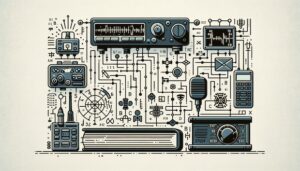Embarking on the journey to become a licensed amateur radio operator is an exciting endeavor that opens doors to a world of communication, innovation, and community service. The amateur radio exam, a pivotal step in this journey, assesses your knowledge and understanding of various topics essential for operating an amateur radio station effectively and responsibly. To aid in your exam preparation, focusing on practice questions can significantly enhance your grasp of the subject matter. These questions cover a wide range of topics, including FCC rules, operating practices, station setup, and basic electronics theory. Here are ten practice questions designed to test your knowledge and prepare you for the types of questions you’ll encounter on the actual exam. These practice items, along with detailed explanations, aim to bolster your understanding and confidence as you approach exam day.
#1. What phenomenon causes the ionosphere to refract HF radio waves back toward the Earth?
#2. In a single-sideband (SSB) transmission, what does the term “suppressed carrier” mean?
In single-sideband (SSB) transmission, the carrier signal is intentionally suppressed or eliminated, and one of the sidebands (either the upper or the lower) is used for conveying information. This method improves the efficiency of the transmission, as power is not wasted on transmitting the carrier, and bandwidth usage is reduced compared to full AM (Amplitude Modulation) transmissions.



